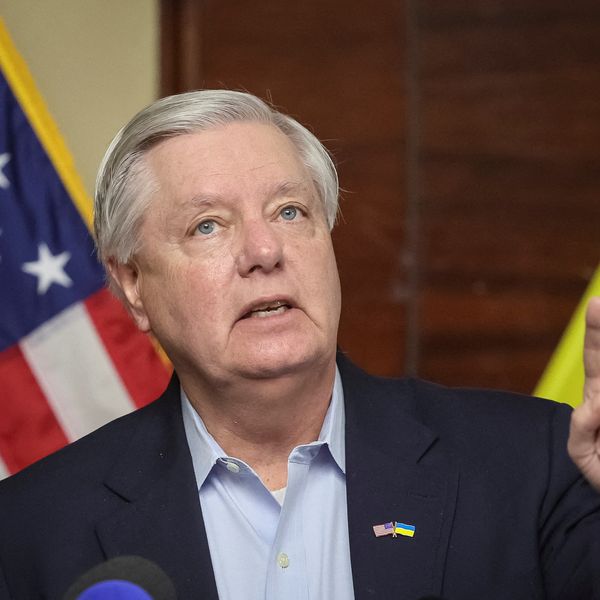2024 marked biggest increase in global military spending since Cold War’s end.
Spurred by ongoing wars in Europe and the Middle East, global military spending rose nearly 10 percent in 2024, the biggest annual increase since at least the end of the Cold War more than 30 years ago, according to the latest in the annual series of reports on world military spending by the Stockholm International Peace Research Institute, or SIPRI.
Altogether, the world spent more than $2.7 trillion dollars on their militaries last year, a 9.4 percent increase from 2023.
While the United States remained the world’s biggest military spender by far, at $997 billion, Washington accounted for 37 percent of total global military expenditures in 2024 – a number of other countries made extraordinary increases in their military budgets, far greater than the 5.7% increase in spending by the U.S.
The war in Ukraine and Israel’s wars in Gaza and Lebanon accounted for the greatest increases.
Russia’s military spending rose by 38 percent compared to 2023, reaching an estimated $149 billion in 2024. That was double the amount it spent in 2015, according to SIPRI.
Military spending by Ukraine, backed by the U.S. and other NATO members, increased at a far more modest rate, at 2.9%, to total $64.7 billion, or less than half of Moscow’s expenditures. But that constituted 34% of Kyiv’s total GDP, the world’s largest military burden expressed as a percentage of total national production.
The Ukraine war also had much broader impacts on military spending in Europe. Germany’s military budget rose by a whopping 28% in 2024 to reach $88.5 billion, propelling it to fourth in the rankings for the world’s biggest military spenders behind the U.S., China, and Russia and, for the first time, the top spot in Western Europe.
Indeed, all NATO member states increased their military spending in 2024, to a total of $1.505 billion, or 55% of total global military expenditures, according to the report. Of that total, European members spent $454 billion, or 30% of the alliance’s total spending. The biggest increase was in Poland, whose military budget grew 31%, to $38 billion, or 4.2% of its GDP, the highest percentage in the alliance. New NATO member Sweden increased its military budget by 34%, to $12 billion. France also increased defense spending, by 6.1%, to $64.7 billion.
“The latest policies adopted in Germany and many other European countries suggest that Europe has entered a period of high and increasing military spending that is likely to continue for the foreseeable future,” noted Lorenzo Scarazzato, a researcher with SIPRI’s Military Expenditure and Arms Production Program.
Increases in military spending in the Middle East were almost entirely focused on Israel’s wars against Hamas in Gaza and Hezbollah in Lebanon, according to the report. Its military budget increased by nearly two-thirds (65%) to $46.5 billion in 2024, the biggest annual rise since the 1967 Arab-Israeli War. That total amounted to 8.8% of its GDP, the world’s second highest burden after Ukraine.
Lebanon also increased its military spending significantly, by 58%, although its total military budget, $635 million, came to a tiny fraction of Israel’s. While spending by the other predominantly Arab states remained relatively static during 2024, Iran’s military budget actually fell by 10% in real terms to $7.9 billion (or less than a quarter of Israel’s budget), in part due to the impact of economic sanctions, according to the report.
Overall, military spending in the Middle East came to $243 billion for the year, an increase of 15% over 2023. Saudi Arabia, the region’s traditional biggest spender on defense equipment, retained its title with military spending reaching $80.3 billion, a slight increase of 1.5% over 2023. It ranked seventh in total military spending in 2024, behind Germany, India, and the United Kingdom.
Military budgets in Asia and the Pacific rose amid heightened global and regional tensions, reaching $629 billion for the year, an increase of 6.3%, the largest year-to-year increase since 2009, according to the report.
With the world’s second biggest defense budget, China accounted for about half the total for the region with an estimated budget of $314 billion, an increase of seven percent over 2023. Japan’s military budget rose even more, by 21%, to $55.3 billion, which SIPRI said was the largest annual increase since 1952. That amounted to 1.4% of GDP, low by NATO standards, but the highest since 1958. Meanwhile, Taiwan’s military budget grew by nearly two percent, to $16.5 billion, while India, with the world’s fifth largest military budget, increased its spending by 1.6% to $86.1 billion.
“Major military spenders in the Asia-Pacific region are investing increasing resources into advanced military capabilities,” said Nan Tian, who directs the Military Expenditure program. “With several unresolved disputes and mounting tensions, these investments risk sending the region into a dangerous arms-race spiral.”
The nations of both Latin America and sub-Saharan Africa were generally far more restrained in their military spending. Military spending in the latter totaled $21.9 billion, a decrease of 3.2% from the previous year. The report found that military budgets in three of the region’s biggest spenders — South Africa, Nigeria, and Ethiopia — fell for the year.
Military spending in South America remained stable overall in 2024 at $53.6 billion, although Colombia increased its budget in part due to the failure of peace talks with a rebel faction, and Guyana increased its budget by 78% to $202 million amid renewed claims by Venezuela to the oil-rich Essequibo region. A dramatic 39% increase in Mexico’s defense budget to nearly $20 billion to fight organized crime was the most notable change in the greater Central American region.














